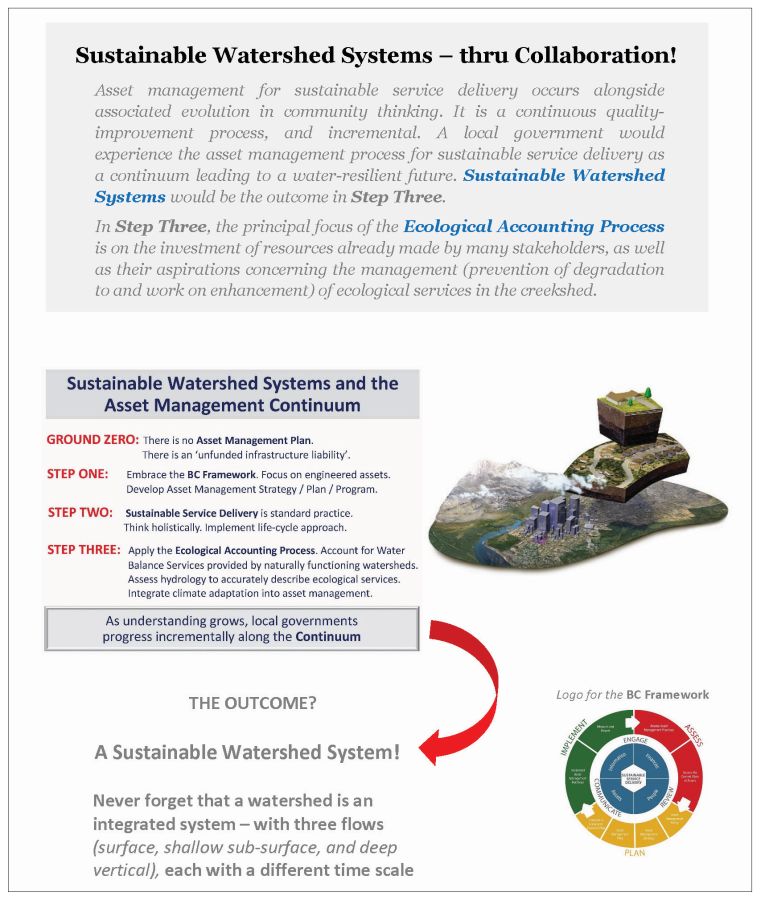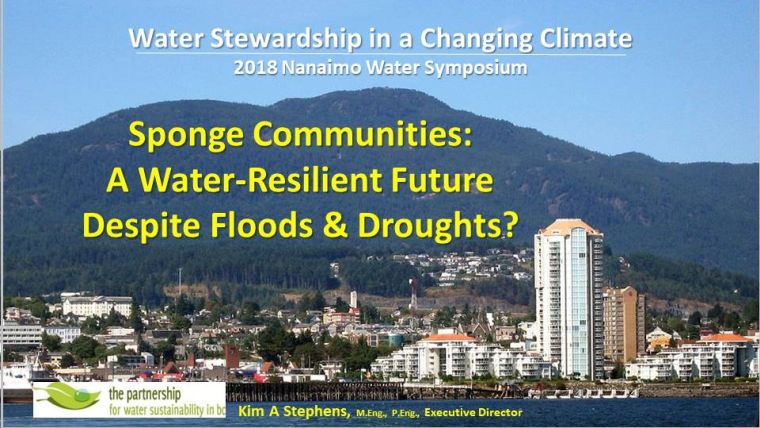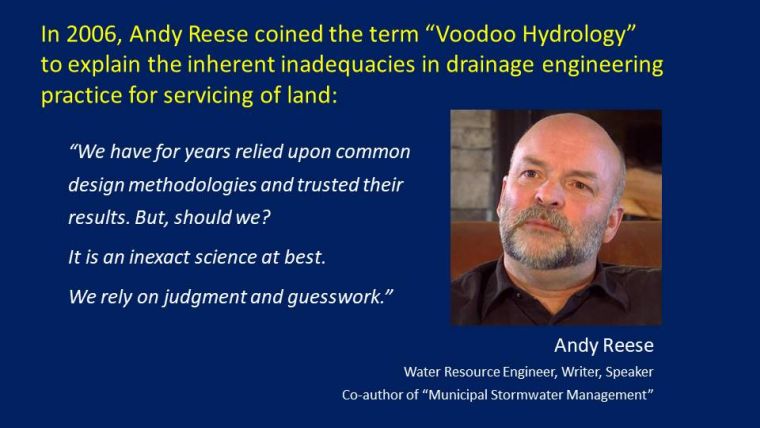YOUTUBE VIDEO: “An educational goal is that those who are involved in municipal land use and drainage would understand the vision for ‘Sustainable Watershed Systems, through Asset Management’,” stated Kim Stephens, keynote speaker at the Nanaimo Water Stewardship Symposium (April 2018)
Note to Reader:
At the Nanaimo Water Stewardship Symposium in April 2018, Kim Stephens, Executive Director of the Partnership for Water Sustainability in British Columbia, asked the audience to reflect on this question when he delivered the keynote presentation:
How will communities ‘get it right’ through collaboration as land develops and redevelops?
The Symposium provided a platform for a call for action because adapting to climate change requires transformation in how we value nature and service land.
Sponge Communities: A Water-Resilient Future Despite Floods and Droughts?
“Other regions are also on a journey where the destination is a water resilient future. Consider that, in 2013, President Xi Jinping injected a new term into the global urban design vocabulary when he proclaimed that cities should ‘act like sponges’ and launched China’s Sponge City program, stated Kim Stephens.
 “The common guiding philosophy? Mimic nature, restore the water balance, adapt to a changing climate. The ‘sponge city’ metaphor is powerful and inspirational. As such, China, Berlin and Philadelphia are demonstrating that when there is a will, there is a way. Still, take a moment to reflect upon their drivers for action – floods and droughts!
“The common guiding philosophy? Mimic nature, restore the water balance, adapt to a changing climate. The ‘sponge city’ metaphor is powerful and inspirational. As such, China, Berlin and Philadelphia are demonstrating that when there is a will, there is a way. Still, take a moment to reflect upon their drivers for action – floods and droughts!
“They have learned the hard way that what happens on the land matters. And now, the ‘new normal’ of frequently recurring extremes has forced them to tackle the consequences of not respecting the water cycle.”
Moving Towards a Water-Resilient Future
“In 2015, the Partnership released Beyond the Guidebook 2015, the third in a series that has built upon Sormwater Planning: A Guidebook for British Columbia,” continued Kim Stephens.
“An educational goal is that those who are involved in municipal land use and drainage would understand the vision for ‘Sustainable Watershed Systems, through Asset Management’. It is an educational goal. Part of that is the paradigm-shift to recognize watersheds as infrastructure assets.
“The significance there is that people in local government get it, in terms of whether you use the word deficit or liability, that we don’t have the money to refinance or replace our existing core infrastructure such as water, sewer or roads. So, a simple challenge to a municipal councillor or regional board member is:
Why would you take on another unfunded liability called drainage – which is what you have been doing for a lifetime!
“But once you begin to think of a watershed as an asset which you have to manage as you would any of your other assets, it then changes the way you think.
“The watershed is a system. It is an integrated system. Think of each of the three pathways, by which rain reaches a stream, as infrastructure assets. Each of those pathways provides a water balance service.”
To Learn More:
Watch the YouTube video and download a PDF copy of Sponge Communities: A Water-Resilient Future Despite Floods and Droughts?
Download a copy of Water Stewardship in a Changing Climate: Convening for Action at the 2018 Nanaimo Water Symposium








